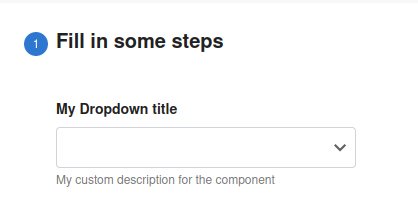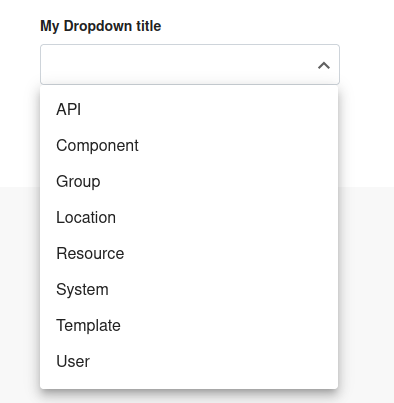This custom scaffolder field, fetches an api call from the backstage backend and allows the result to be rendered to a list.
It can be installed as follows in the App.tsx
...
<Route path="/create" element={<ScaffolderPage />}>
<ScaffolderFieldExtensions>
...
<SelectFieldFromApiExtension />
</ScaffolderFieldExtensions>
</Route>
...Here is an example of its use in a template:
apiVersion: scaffolder.backstage.io/v1beta3
kind: Template
metadata:
name: custom-field-demo
title: Custom Field Demo
description: Custom Field Demo.
spec:
owner: backstage/techdocs-core
type: service
parameters:
properties:
- title: Custom
properties:
custom:
type: string
# Use `SelectFieldFromApi` to configure the select field for the entry.
ui:field: SelectFieldFromApi
ui:options:
title: My Dropdown title
description: My custom description for the component
# The Path on the Backstage API and the parameters to fetch the data for the dropdown
path: 'catalog/entity-facets'
params:
facet: 'kind'
# (Optional) Renders the provided text as a placeholder value into the select box.
placeholder: 'Select from options'
# This selects the array element from the API fetch response. It finds the array with the name kind
# under the facets object
arraySelector: 'facets.kind'
# (Optional) This selects the field in the array to use for the value of each select item. If its not specified
# it will use the value of the item directly.
valueSelector: 'count'
# (Optional) This selects the field in the array to use for the label of each select item.
labelSelector: 'value'The configuration above will result in an outgoing request to: https://my.backstage.com/api/catalog/entity-facets?facet=kind
The response is the following, and it will extract the count field as the value and value as the label of the dropdown.
{
"facets": {
"kind": [
{
"count": 5,
"value": "foo"
}
]
}
}The example template would result in the following dropdown:
You also have the running user frontend context available for you in case there is a need to template the URL string based on the user. The underlying functionality uses nunjucks to handle templating and supports some filters that are available within the library. You can find the current user information from context using the template {{ identity }}. The items available within the identity object can be found from the Backstage GitHub repository.
Roadie gives you a hassle-free, fully customisable SaaS Backstage. Find out more here: https://roadie.io.


